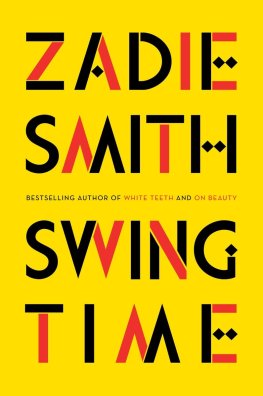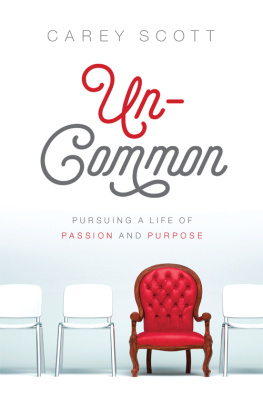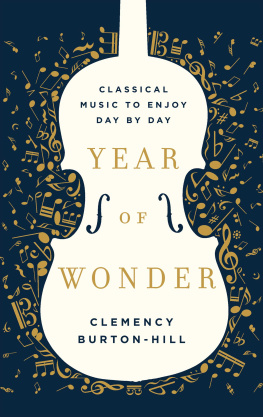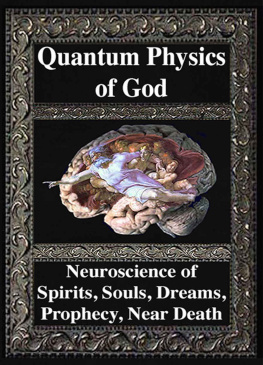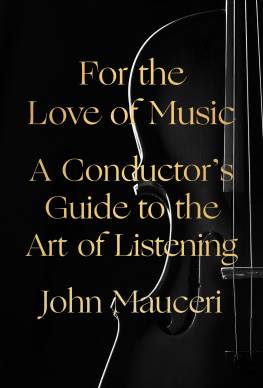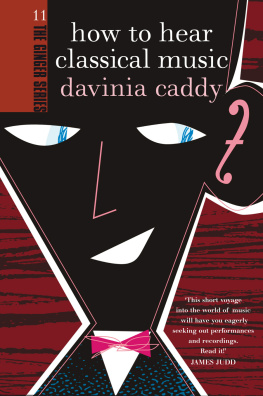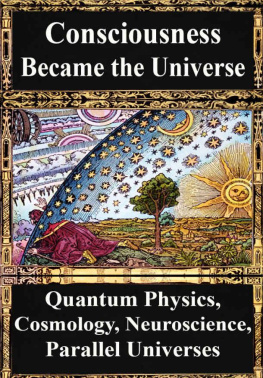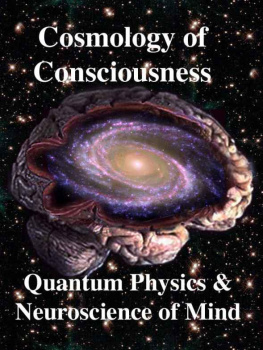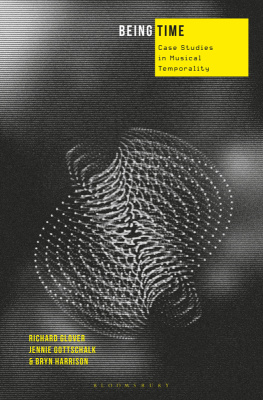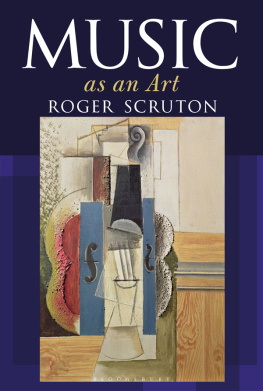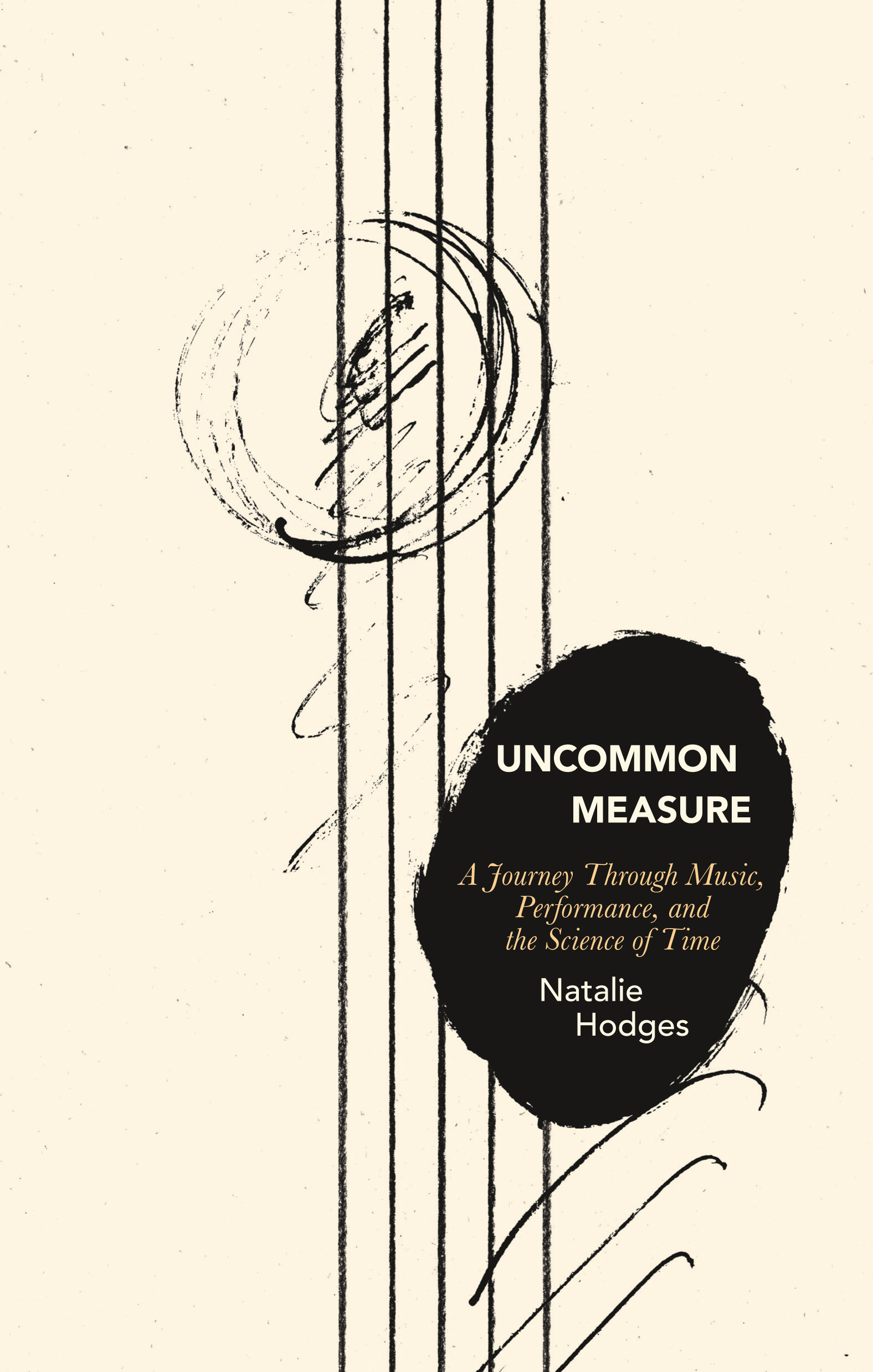Contents
Guide
Pagebreaks of the print version
MORE PRAISE FOR Uncommon Measure
Uncommon Measure is astonishingly assured and inventive. Mixing personal reflection, reportage, literary criticism, music theory, neurology, even evolutionary studies, Natalie Hodges has pulled off something singular and wonderful. From the first page to the last, the book rides on the high wire of Hodgess virtuosic voice. It is shot through with a sinuous, luminous energy.
Darcy Frey, author of
The Last Shot: City Streets, Basketball DreamsThere is not a sentence in Hodgess Uncommon Measure that does not illumine, not a single insight that doesnt lead on to a still greater one, not a moment that does not open us to wonder. In searching and visionary prose, Hodges comes close to creating a new language, one of continual questioning and delight. This is an exquisite book to be read and reread, a treasure.
Richard Hoffman, author of
Half the House and
Love & FuryHodges is a new, valuable voice in the world of music making and music writing. She moves with elegance from her own experience as a violinist to the scientific underpinnings of her subject: from math, physics, and neurology to quantum mechanics, biology, and entanglement theory. Uncommon Measure is a welcome debut from a wonderfully talented writer.
Annik LaFarge, author of
Chasing ChopinUNCOMMONMEASURE
A Journey Through Music,Performance,and the Science of Time
NATALIE HODGES

First published in the United States in 2022
by Bellevue Literary Press, New York
For information, contact:
Bellevue Literary Press
90 Broad Street
Suite 2100
New York, NY 10004
www.blpress.org
2022 by Natalie Hodges
Untrainment first appeared in The Harvard Review, Issue 55.
The Still Point of the Turning World first appeared in Solstice: a Magazine of Diverse Voices, Spring 2021.
Library of Congress Cataloging-in-Publication DataNames: Hodges, Natalie, author.
Title: Uncommon measure: a journey through music, performance, and the science of time / Natalie Hodges.
Description: First edition. | New York: Bellevue Literary Press, 2022. | Includes bibliographical references.
Identifiers: LCCN 2021001707 | ISBN 9781942658979 (paperback) | ISBN 9781942658986 (epub)
Subjects: LCSH: Music--Performance--Psychological aspects. | Time--Psychological aspects. | Time in music. | Improvisation (Music)--Psychological aspects. | Hodges, Natalie. | Musicians--Psychology.
Classification: LCC ML3838 .H66 2022 | DDC 781.4/3111--dc23
LC record available at https://lccn.loc.gov/2021001707
All rights reserved. No part of this publication may be reproduced or transmitted in any form or by any means, electronic or mechanical, including photocopy, recording, or any information storage and retrieval system now known or to be invented, without permission in writing from the publisher, except by a reviewer who wishes to quote brief passages in connection with a print, online, or broadcast review.
Bellevue Literary Press would like to thank all its generous donorsindividuals and foundationsfor their support.

This project is supported in part by an award from the National Endowment for the Arts.

This publication is made possible by the New York State Council on the Arts with the support of the Office of the Governor and the New York State Legislature.
Book design and composition by Mulberry Tree Press, Inc.
Bellevue Literary Press is committed to ecological stewardship in our book production practices, working to reduce our impact on the natural environment.
This book is printed on acid-free paper.
Manufactured in the United States of America.
First Edition
135798642
paperback ISBN: 978-1-942658-97-9
ebook ISBN: 978-1-942658-98-6
for my family
Contents
Prelude
If you want to change the past, all you have to do is try to record what happened in it.
In 2015, a group of Australian physicists shot a series of helium atoms through tiny slits formed by crosshatched beams of laser light. As they watched, something incredible happened: Each of the atomssuch singular things, with their particular mass and electrical chargeseemed to ripple through not one but two parallel slits simultaneously, like waves of light or sound. In other words, the atoms managed to exist in multiple locations at the same instant, defying Newtonian laws and all classical intuition. But when the physicists placed an interferometer on the opposite sides of the slits, in order to measure the atoms wavelike path without disrupting it, something even stranger happened: Each atom would pass through only one slitexactly the way you would expect a particle towithout exhibiting any wavelike behavior at all. It was as though the atoms knew before they passed through the slits that, an instant later, they were going to be recorded. In the words of one of the studys authors: A future eventthe act of recording their observationscauses the [atom] to decide its past.
One hypothesis holds that the wave represents a multiplicity of potential locations for the particle at a given moment in time, and in a given moment the particle inhabits all of those at once. Somehow, though, it is the act of recording that forces the atom to fix on a single path.
This phenomenonwhich continues to pose a foundational challenge to philosophersseems intuitively true from a human and literary perspective. Writing the book of linear time changes our reading of the pastif not the events themselves, then at least their meaning, our sense of how they happened and why. The stories that make up a single lifetime are perpetually mixed up and mixed together; our subconscious minds are constantly at work rewriting time in the margins of our memories, coaxing narrative out of chronology, temporal order out of times chaos. In the act of recording, writing, remembering, we chart our stories onto a particular pathone way, perhaps, that from our limited human perspective we can come to terms with the infinity of past paths not taken. Writing thus distorts our sense of our own time, but it also orients us in it and helps us give it meaning.
I set out to write an exploration of music and its relation to the science of time. Music itself embodies time, shaping our sense of its passage through patterns of rhythm and harmony, melody and form. We feel that embodiment whenever we witness an orchestras collective sway and sigh to the movement of a baton, or measure a long car ride by the playlist of songs weve run through; every time we feel moved by music to dance; when we find, as we begin dancing, that we know intuitively how to take the rhythm into our bodies, that we are somehow sure of when and how the next beat will fall. Surely, I thought, there must be a scientific reason behind that innately human sense of embodied time, a way of grounding our musical intuition in physics and biology, if not completely quantifying it.


